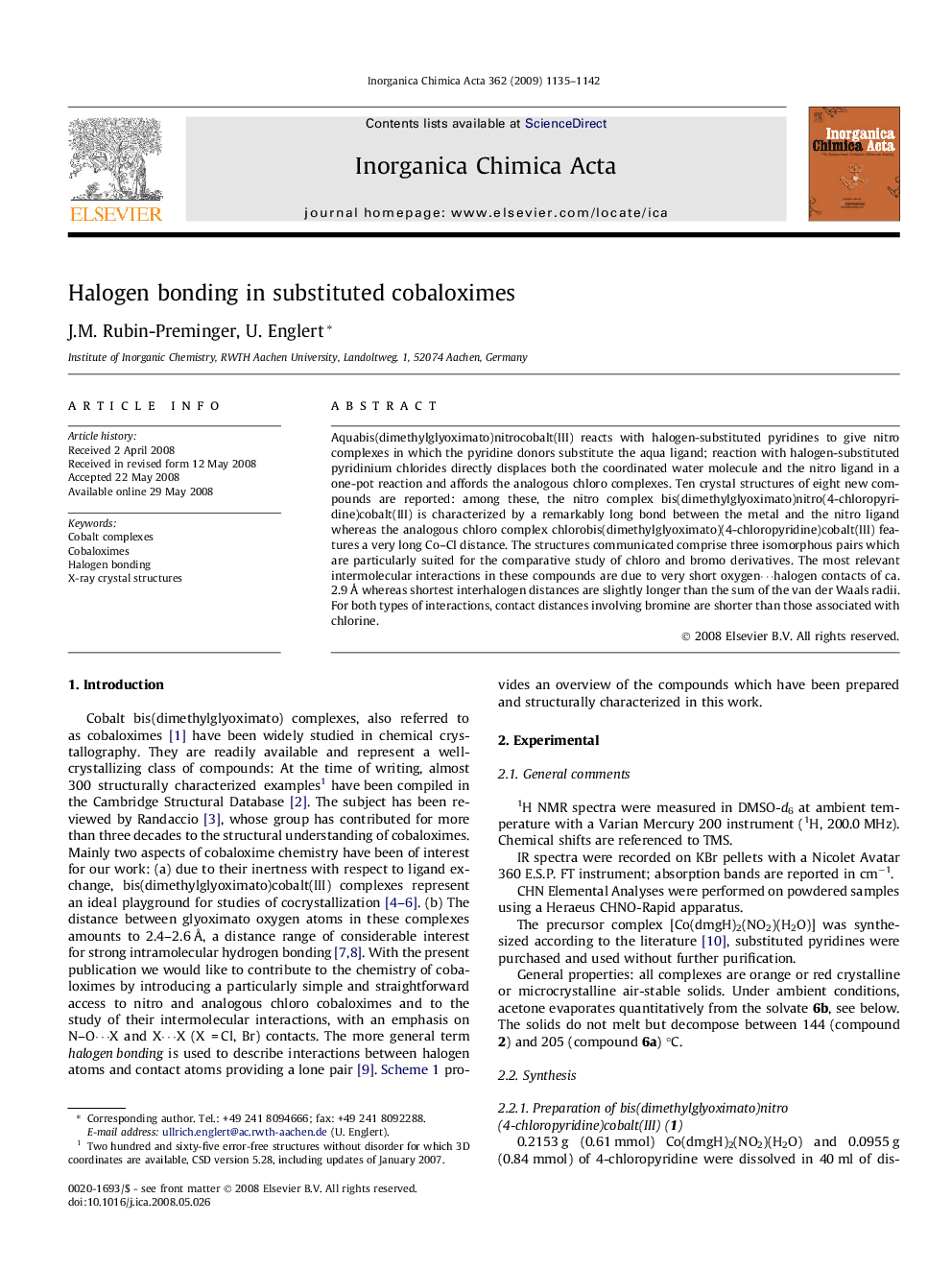| Article ID | Journal | Published Year | Pages | File Type |
|---|---|---|---|---|
| 1307044 | Inorganica Chimica Acta | 2009 | 8 Pages |
Aquabis(dimethylglyoximato)nitrocobalt(III) reacts with halogen-substituted pyridines to give nitro complexes in which the pyridine donors substitute the aqua ligand; reaction with halogen-substituted pyridinium chlorides directly displaces both the coordinated water molecule and the nitro ligand in a one-pot reaction and affords the analogous chloro complexes. Ten crystal structures of eight new compounds are reported: among these, the nitro complex bis(dimethylglyoximato)nitro(4-chloropyridine)cobalt(III) is characterized by a remarkably long bond between the metal and the nitro ligand whereas the analogous chloro complex chlorobis(dimethylglyoximato)(4-chloropyridine)cobalt(III) features a very long Co–Cl distance. The structures communicated comprise three isomorphous pairs which are particularly suited for the comparative study of chloro and bromo derivatives. The most relevant intermolecular interactions in these compounds are due to very short oxygen⋯halogen contacts of ca. 2.9 Å whereas shortest interhalogen distances are slightly longer than the sum of the van der Waals radii. For both types of interactions, contact distances involving bromine are shorter than those associated with chlorine.
Graphical abstractOxygen-halogen contacts as short as O⋯Br = 2.9 Å represent the closest intermolecular interactions in several molecular crystals of new cobaloximes. The short contacts occur between aryl-bonded halogen substituents and either glyoximato or carbonyl oxygen atoms in solvent molecules.Figure optionsDownload full-size imageDownload as PowerPoint slide
